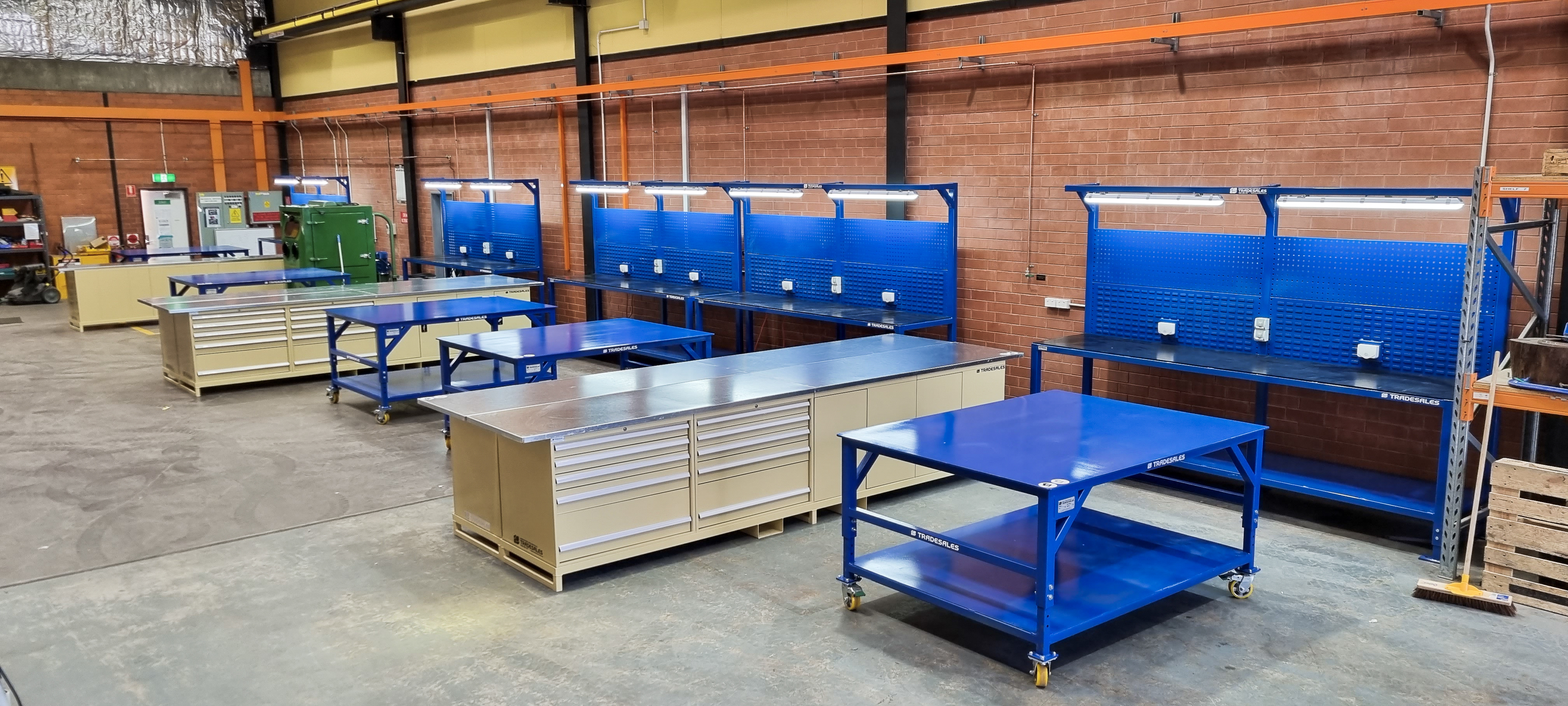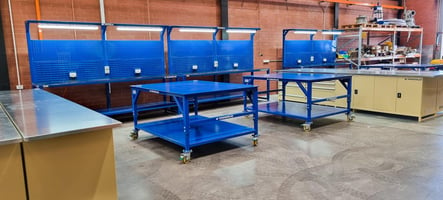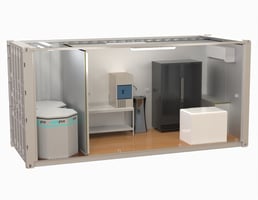The team here at Tradesales are more than familiar with the importance of an adjustable workbench....
Workbenches are a fundamental component of any industrial workspace, providing a stable and reliable surface for workers to carry out their tasks. However, traditional fixed-height workbenches can contribute to fatigue and musculoskeletal issues, especially in environments where workers spend long hours at their stations.
According to Harry Wang, an on-site Physiotherapist at Biosymm, currently stationed within the mining industry, an adjustable workbench which allows for standing or sitting for fine or more labour-intensive tasks provides for increased productivity and reduction in fatigue, which can contribute towards musculoskeletal injuries.
Biosymm is a leader in workplace health, providing services such as physiotherapy, injury management, and ergonomic assessments for some of Australia’s largest companies.
Reducing Musculoskeletal Injuries
Sprains, strains, and other musculoskeletal injuries account for nearly 43% of all
serious work-related injury claims in Australia. According to Safe Work Australia, Work-Related Musculoskeletal Disorders (WMSDs) are the most common condition for which workers’ compensation claims are currently lodged.
“One of the most common issues faced by workers in industrial environments is prolonged sustained postures in awkward positions, leading to complaints of lower back, neck, and shoulder pain. This problem can be exacerbated when workers are required to wear protective gear, such as breathing adflow masks, which can increase the strain on their bodies,” said Harry.
Adjustable workbenches allow workers to modify their workstation height, ensuring they maintain more neutral postures throughout the day. By enabling them to shift between sitting and standing positions regularly, these workbenches help reduce strain on muscles and joints, ultimately decreasing the risk of injury.
Improved Productivity and Fatigue Reduction
Fatigue can be a primary contributor towards musculoskeletal injuries, and reducing it can directly impact productivity.
Height-adjustable workbenches have shown positive improvements in ergonomics, which can reduce workplace injuries and increase efficiency.
“Adjustable workbenches allow for standing or sitting during fine or labour-intensive tasks, which can lead to increased productivity and reduced fatigue,” he explains.
“Allowing workers to adjust their workstations can prevent unnecessary strain and improve overall workflow.”
Finding the Right Height: The Importance of Adjustability
There is no single “goldilocks” height for workbenches that suits all workers.
Anthropometric data suggests that the ideal workbench height varies widely among individuals.
“The standing elbow height for 95% of males falls between 983mm and 1160mm, while for females, it ranges from 911mm to 1065mm. An adjustable workbench should ideally fit within these dimensions to accommodate most workers,” continued Harry.
“To encompass the 99th percentile, including taller individuals, a bench would ideally need to reach up to 1200mm.”
Essential Modifications and Accessories
Beyond height adjustability, additional modifications and workshop equipment can enhance a workbench’s usability and ergonomic benefits.
From a Physiotherapist’s perspective, Harry highlights the following key features:
- Integrated Storage: Minimising the need for workers to carry heavy tools repeatedly.
- Digital Height Indicators: Allowing workers to adjust their workstations to an optimal height quickly.
- Seated Work Capabilities: Ensuring workbenches can be lowered for tasks that require a seated position.
- Nearby Tool Racks: Preventing excessive lifting by keeping heavy tools easily accessible.
A Smart Investment for Businesses
Companies considering upgrading their workstations should take note of the financial implications of workplace injuries.
“The average cost of a Workers’ Compensation injury in mining is $73,532,” said Harry citing data published by Workcover WA October 2023.
“This does not account for productivity losses. By investing in ergonomic workbenches, companies can reduce injury risks while improving efficiency.”
For businesses experiencing frequent reports of repetitive strain injuries or discomfort from workers, upgrading to height-adjustable workbenches could be a beneficial decision. Tailoring workstations to the needs of individual employees not only enhances workplace safety but also promotes a healthier, more productive workforce.
Height-adjustable workbenches are more than just a convenience—they are an essential tool in creating safer and more efficient industrial workplaces. By reducing strain, preventing injuries, and increasing productivity, these workbenches prove to be a worthwhile investment for any company committed to worker well-being.
Check out Tradesales range of adjustable workbenches, or contact us today to learn more about how we can help improve your workplace ergonomics.



